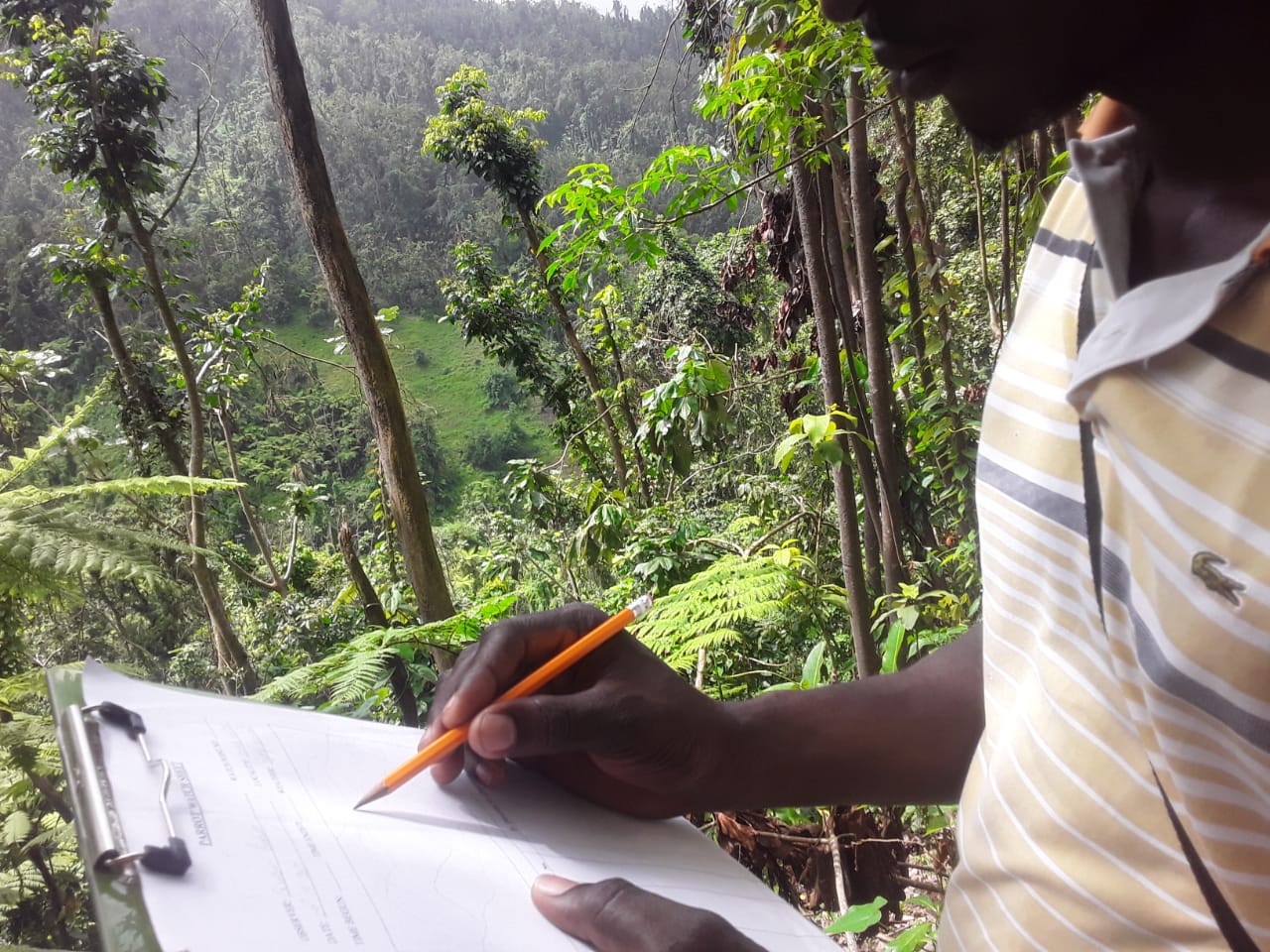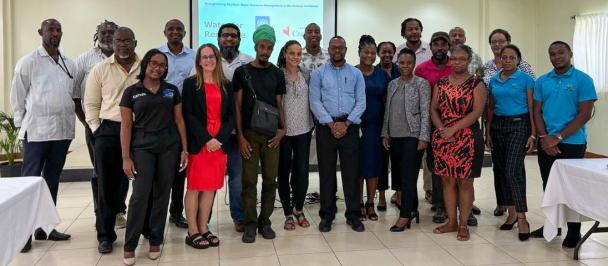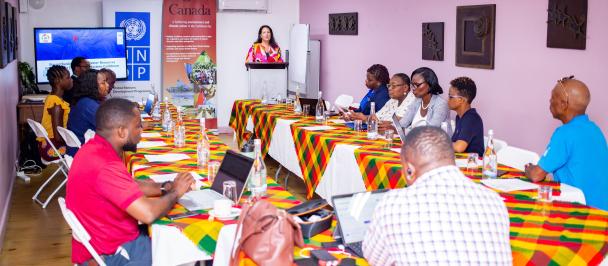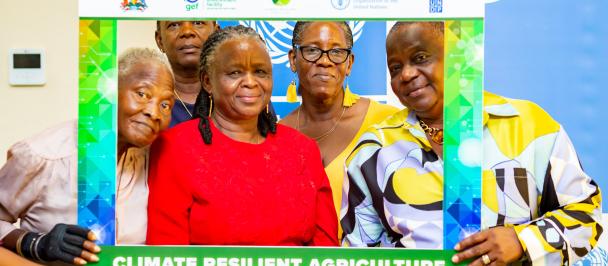During the period September 14 to 17, 2021, sixty staff members and volunteers of the Forestry Department of the Ministry of Agriculture, Forestry, Fisheries, Rural Transformation, Industry and Labour, journeyed to five (5) sectors positioned in remote locations of the interior forest of Saint Vincent to conduct a National Parrot census of the Amazona guildingii.
In past years, the exercise of the census was conducted on a biennial (every other year) cycle to determine an estimation of the endangered Saint Vincent Parrot. This was initially started in the year 1986 to determine the population and monitor the trends in the population changes. The most recent census of 2010 recorded an estimated 800 parrots. Since that eleven year lapse a census has not been conducted due to limited financial resources.
The recent eruptions of the La Soufriere volcano, along with the almost annual occurrences of extreme weather events have ushered in the need to have a census. This was made possible by resources received from two Global Environment Facility (GEF) funded projects, executed through the UNDP; Conserving Biodiversity and Reducing Land Degradation using a Ridge to Reef Approach, and the UNEP Integrating Water, Land and Ecosystems Management in Caribbean Small Island Developing States (IWEco) Projects.
The methodology adopted by the department consisted of teams conducting dawn and dusk watches in the five sectors which are further subdivided into five watch-points. In the past, census exercises were executed over a 5-week span, one sector per week. With the provision of resources through the joint projects, the census took on a different approach and consisted of all sites being examined simultaneously giving the opportunity to make observation throughout the island at the same time.
The Department was pleased to conduct this exercise which provides a good status of the population of nation’s national bird and the flagship species which also indicates the status and the health of the forest and the ecosystem services it provides. Monitoring statistics such as these are needed for the sustainable development of the nation.

 Locations
Locations




